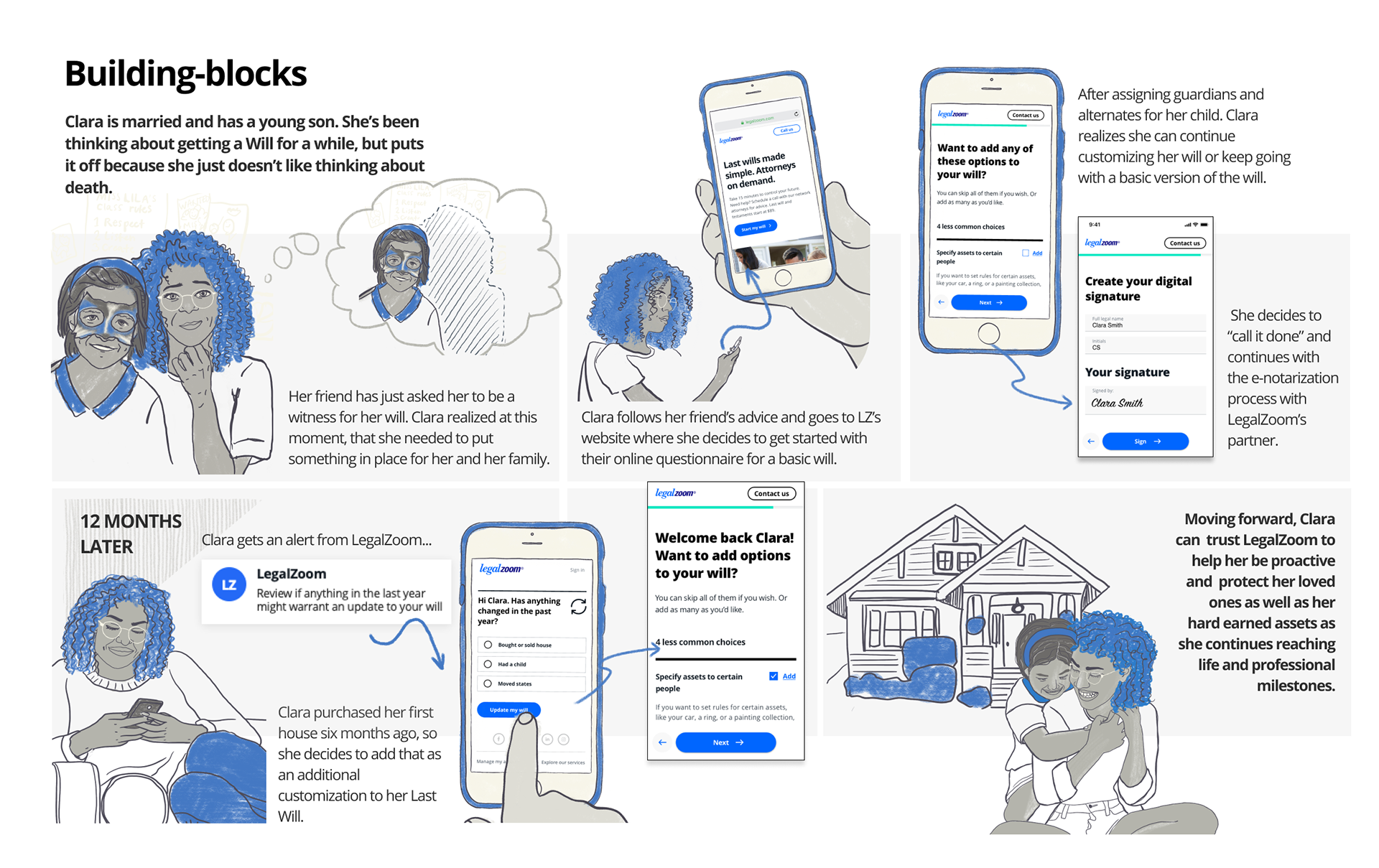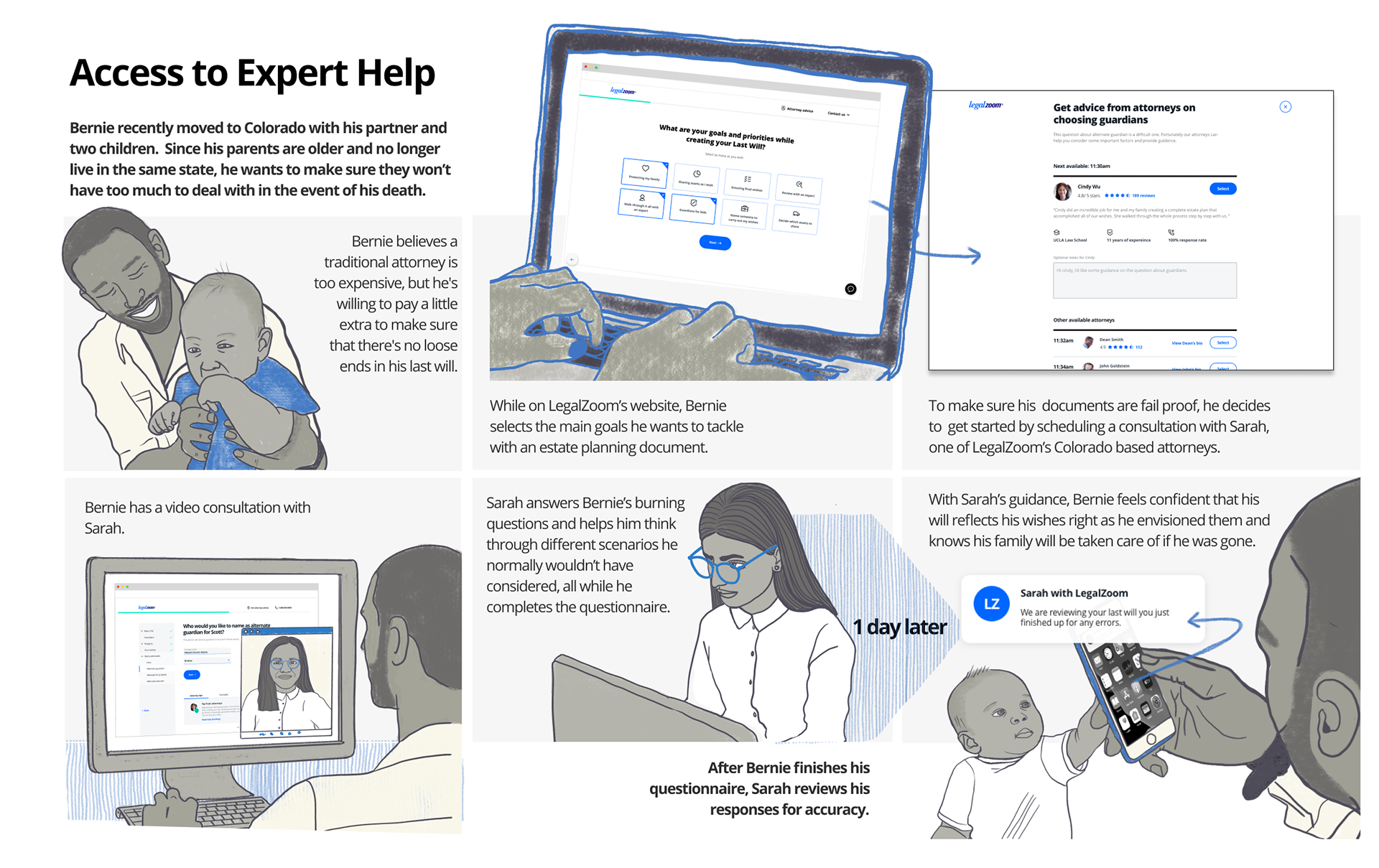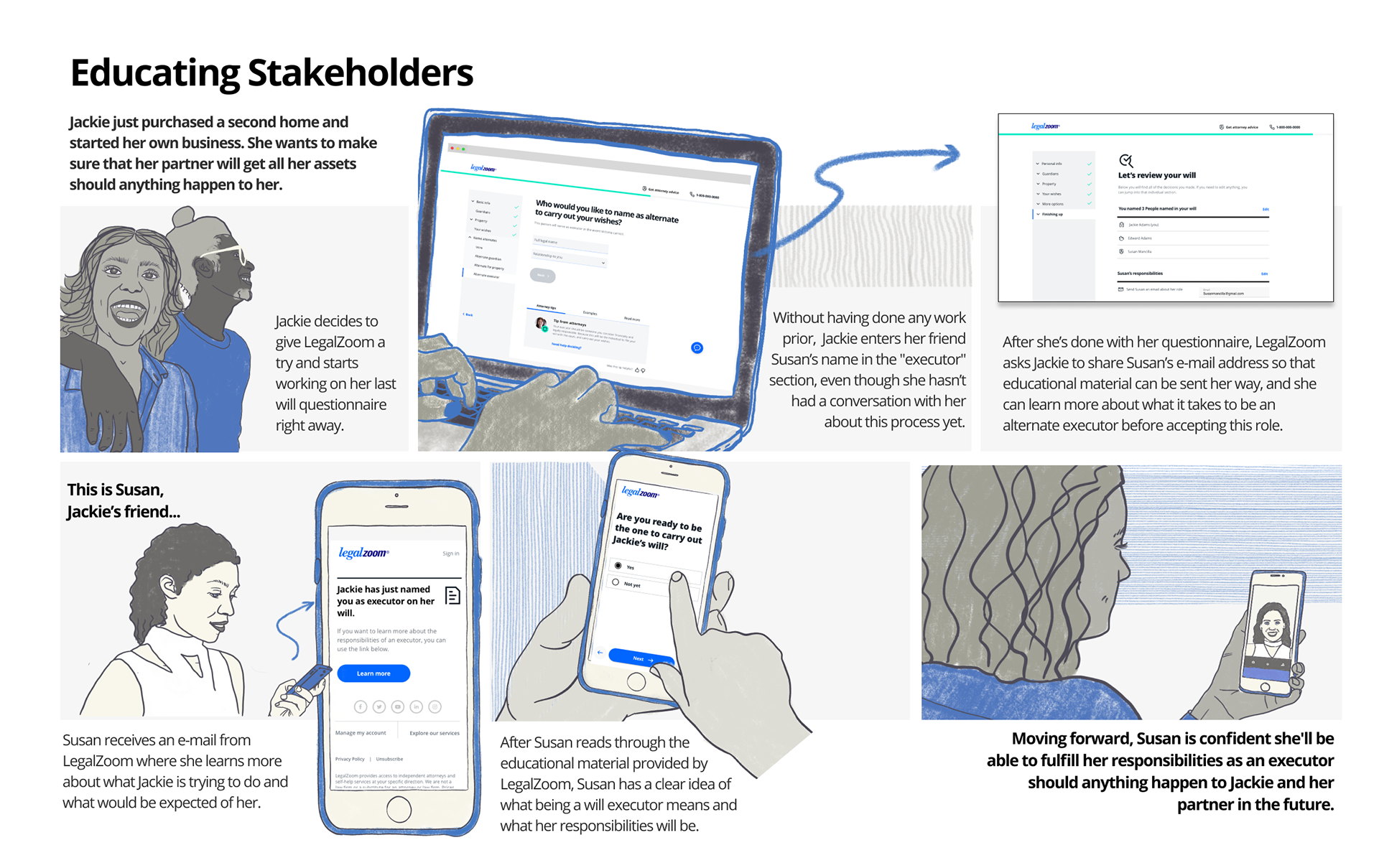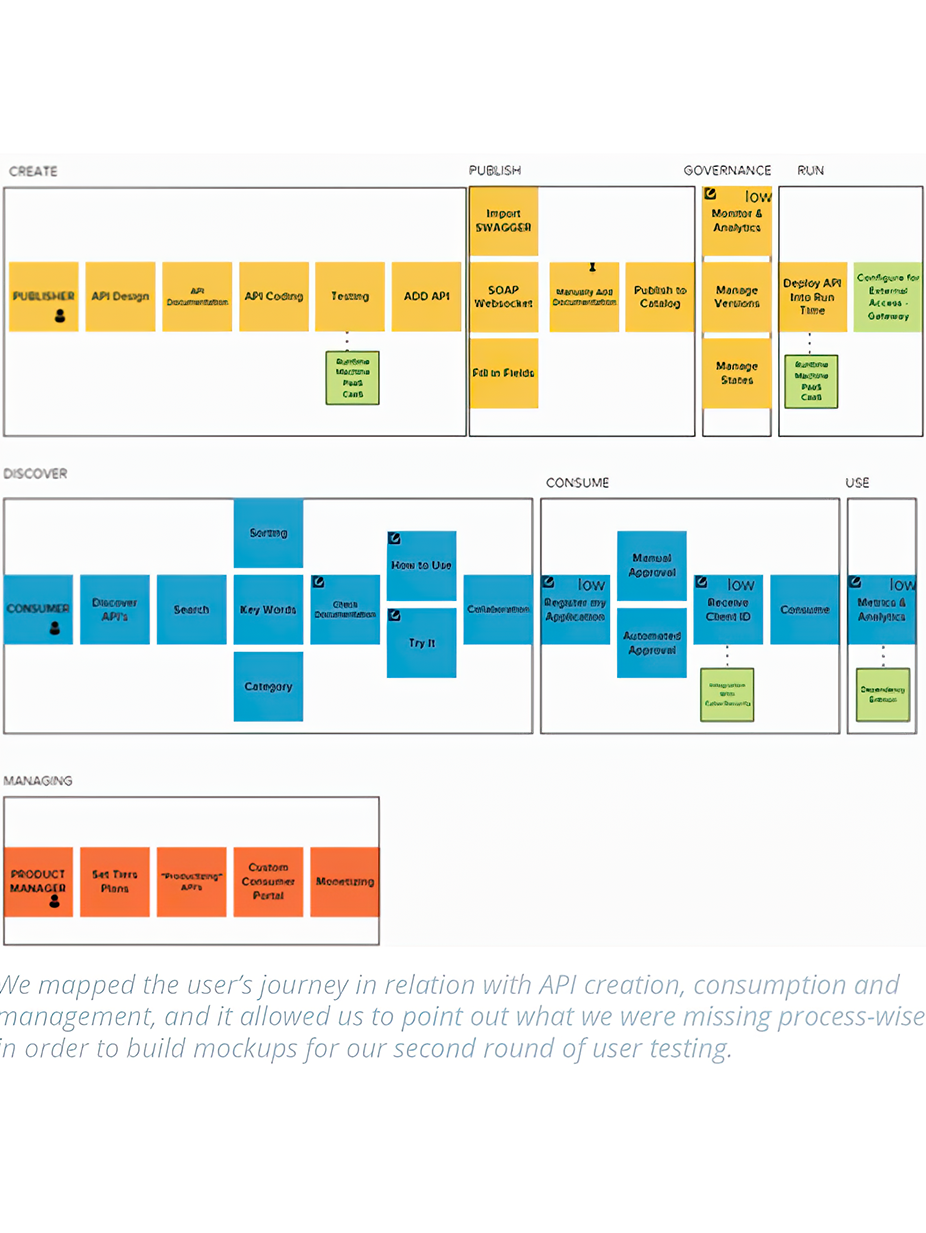Storyboarding concepts for Estate Planning new products & services (July 2020)
Process from research to concept development. (April 2020)
We talked to a total of 19 participants with different levels of expertise with estate planning during generative and evaluative research (April - July 2020)
Estate Planning Customer Journey Map with Participant Quotes, Research Insights & Key Moments (October 2020)
Using insight combination during ideation, we came up with more than 40 ideas that we later prioritized in terms of value to the business and value to the customer.




We recruited eight potential customers with different levels of expertise with estate planning to test the four concepts we developed.
A few key quotes of participant feedback for each one of our concept tests. (June 2020)
High level summary of Estate Planning Concept Test findings (July 2020)
EP product near term recommendations at the screen, flow and system level.



